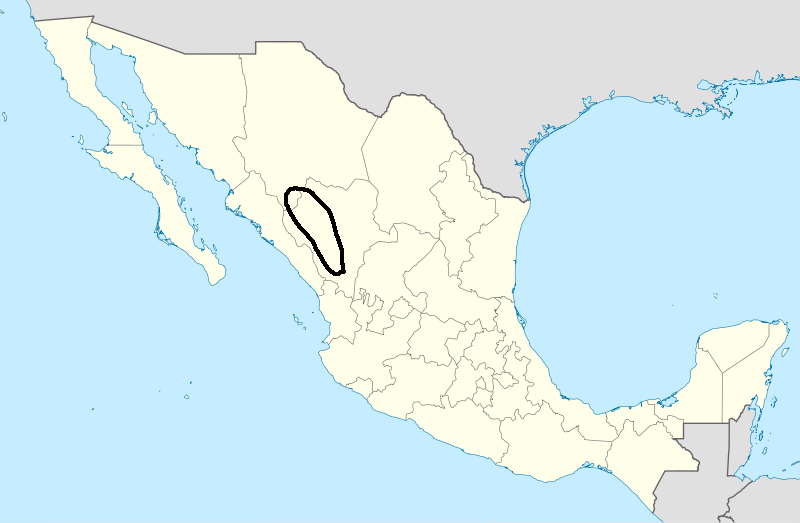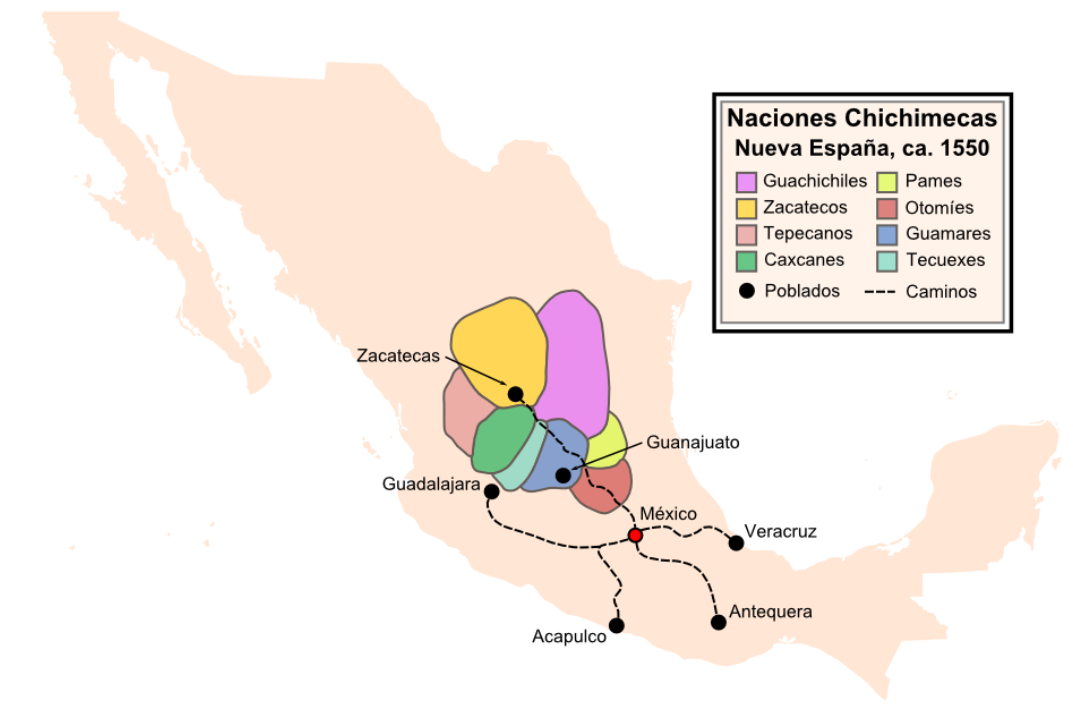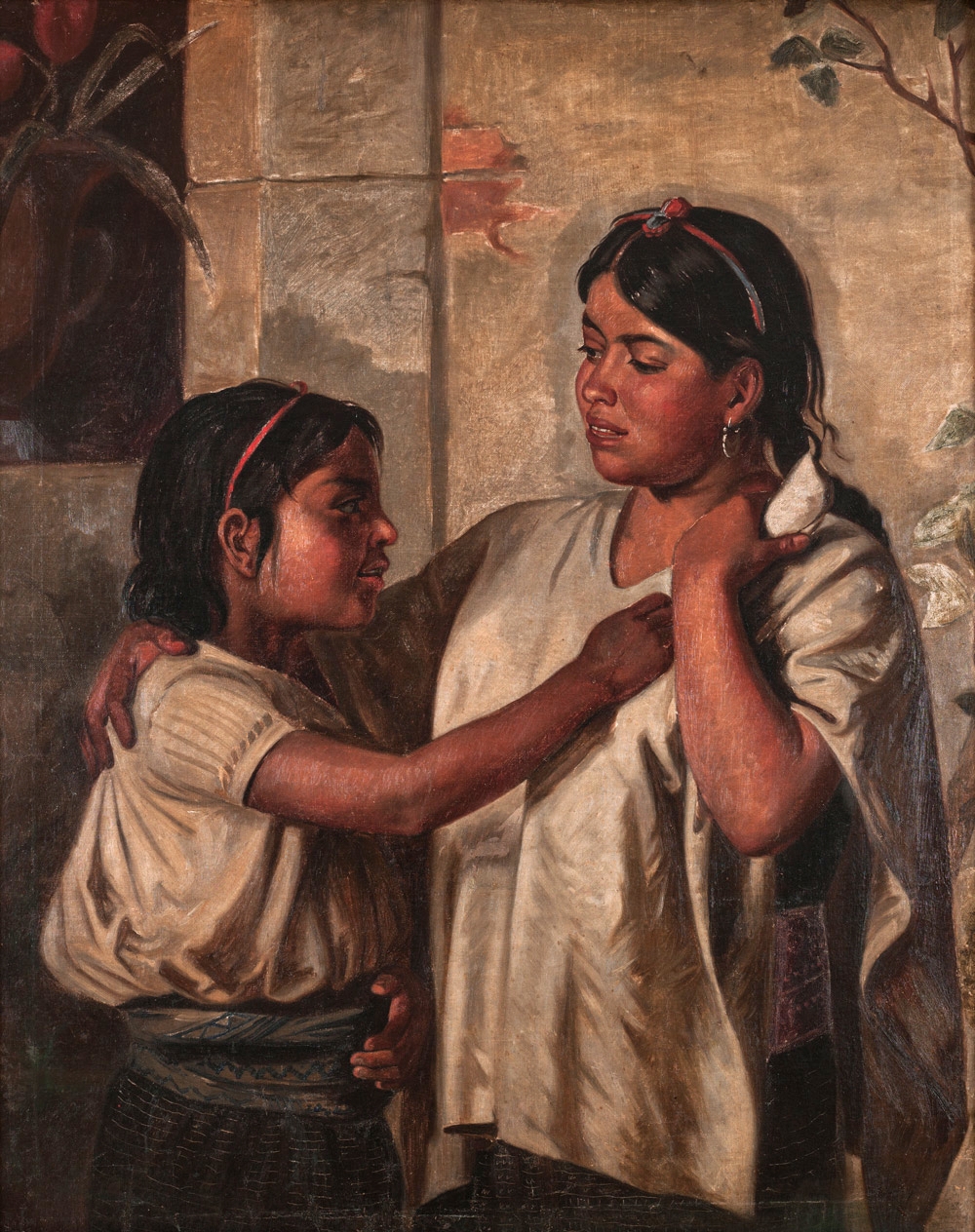|
Quautlatas
Quautlatas (Northern Tepehuán pronunciation: /quäutlˈätäs/) was a Tepehuán religious leader who inspired the bloody Tepehuán Revolt against the Spanish in Mexico in 1616. Quautlatas was known as "The Tepehuán Prophet". The Tepehuán and the Spanish The Tepehuán were an agricultural people who lived primarily in the future Mexican state of Durango on the eastern slopes of the Sierra Madre Occidental. Early Spanish explorers described them as numerous but, apparently, a series of epidemics of introduced European diseases reduced their numbers by more than 80 percent. By the time of the revolt their numbers may have been only about 10,000 Spanish silver miners and ranchers began settling in the Tepehuán lands in the 1570s and Jesuit missionaries began work among them in 1596. The Tepehuán seemed relatively receptive to the missionaries and by 1615 a Jesuit could declare that the Tepehuán “showed great progress and were in the things of our holy faith very Hispan ... [...More Info...] [...Related Items...] OR: [Wikipedia] [Google] [Baidu] |
Tepehuán Revolt
The Tepehuán Revolt broke out in Mexico in 1616 when the Tepehuán Indians attempted to break free from Spanish rule. The revolt was crushed by 1620 after a large loss of life on both sides. The Tepehuán people The Tepehuán people lived on the rugged eastern slopes and valleys of the Sierra Madre Occidental, primarily in the future state of Durango. They spoke a Uto-Aztecan language and depended mostly on agriculture for their livelihood. Thus, they differed from their neighbors in the deserts to the east, the Chichimeca who were nomadic and semi-nomadic hunter-gatherers. The Tepehuán, Acaxee, and Xixime to their west shared common traits such as The Tepehuán suffered a series of devastating epidemics of European-introduced diseases in the years before the revolt. Epidemics were known to have occurred in their region in 1594, 1601-1602, 1606-1607, 1610, and 1616-1617. The Tepehuán and their neighbors may have been reduced in population by more than 80 percent by the ... [...More Info...] [...Related Items...] OR: [Wikipedia] [Google] [Baidu] |
Tepehuán
The Tepehuán are an indigenous people of Mexico. They live in Northwestern, Western, and some parts of North-Central Mexico. The indigenous Tepehuán language has three branches: Northern Tepehuan, Southeastern Tepehuan, Southwestern Tepehuan. The heart of the Tepehuan territory is in the Valley of Guadiana in Durango, but they eventually expanded into southern Chihuahua, eastern Sinaloa, and northern Jalisco, Nayarit, and Zacatecas. By the time of the Spanish conquest of the Aztec Empire, Tepehuan lands spanned a large territory along the Sierra Madre Occidental. Tepehuán groups are divided into the Ódami (Northern Tepehuán), Audam (Southwestern Tepehuán), and O'dam (Southeastern Tepehuán), each with their own language, culture, and beliefs. Name ''Tepehuán'', alternately ''Tepeguán'', derives from the Nahuatl term ''Tēpēhuanih'', meaning "Mountain Dwellers" or " Mountain People". The ''tepe'' element comes from Nahuatle ''tepetl'' (mountains), and ''huan'' co ... [...More Info...] [...Related Items...] OR: [Wikipedia] [Google] [Baidu] |
Religious Figures Of The Indigenous Peoples Of North America
Religion is usually defined as a social- cultural system of designated behaviors and practices, morals, beliefs, worldviews, texts, sanctified places, prophecies, ethics, or organizations, that generally relates humanity to supernatural, transcendental, and spiritual elements; however, there is no scholarly consensus over what precisely constitutes a religion. Different religions may or may not contain various elements ranging from the divine, sacred things, faith,Tillich, P. (1957) ''Dynamics of faith''. Harper Perennial; (p. 1). a supernatural being or supernatural beings or "some sort of ultimacy and transcendence that will provide norms and power for the rest of life". Religious practices may include rituals, sermons, commemoration or veneration (of deities or saints), sacrifices, festivals, feasts, trances, initiations, funerary services, matrimonial services, meditation, prayer, music, art, dance, public service, or other aspects of human culture. Religions h ... [...More Info...] [...Related Items...] OR: [Wikipedia] [Google] [Baidu] |
Mexican Rebels
Mexican may refer to: Mexico and its culture *Being related to, from, or connected to the country of Mexico, in North America ** People *** Mexicans, inhabitants of the country Mexico and their descendants *** Mexica, ancient indigenous people of the Valley of Mexico ** Being related to the State of Mexico, one of the 32 federal entities of Mexico ** Culture of Mexico *** Mexican cuisine *** historical synonym of Nahuatl, language of the Nahua people (including the Mexica) Arts and entertainment * "The Mexican" (short story), by Jack London * "The Mexican" (song), by the band Babe Ruth * Regional Mexican, a Latin music radio format Films * ''The Mexican'' (1918 film), a German silent film * ''The Mexican'' (1955 film), a Soviet film by Vladimir Kaplunovsky based on the Jack London story, starring Georgy Vitsin * '' The Mexican'', a 2001 American comedy film directed by Gore Verbinski, starring Brad Pitt and Julia Roberts Other uses * USS ''Mexican'' (ID-1655), United St ... [...More Info...] [...Related Items...] OR: [Wikipedia] [Google] [Baidu] |
Native American Leaders
Native may refer to: People * Jus soli, citizenship by right of birth * Indigenous peoples, peoples with a set of specific rights based on their historical ties to a particular territory ** Native Americans (other) In arts and entertainment * Native (band), a French R&B band * Native (comics), a character in the X-Men comics universe * ''Native'' (album), a 2013 album by OneRepublic * ''Native'' (2016 film), a British science fiction film * ''The Native'', a Nigerian music magazine In science * Native (computing), software or data formats supported by a certain system * Native language, the language(s) a person has learned from birth * Native metal, any metal that is found in its metallic form, either pure or as an alloy, in nature * Native species, a species whose presence in a region is the result of only natural processes Other uses * Northeast Arizona Technological Institute of Vocational Education (NATIVE), a technology school district in the Arizona portion o ... [...More Info...] [...Related Items...] OR: [Wikipedia] [Google] [Baidu] |
Colonial Mexico
Colonial or The Colonial may refer to: * Colonial, of, relating to, or characteristic of a colony or colony (biology) Architecture * American colonial architecture * French Colonial * Spanish Colonial architecture Automobiles * Colonial (1920 automobile), the first American automobile with four-wheel brakes * Colonial (Shaw automobile), a rebranded Shaw sold from 1921 until 1922 * Colonial (1921 automobile), a car from Boston which was sold from 1921 until 1922 Places * The Colonial (Indianapolis, Indiana) * The Colonial (Mansfield, Ohio), a National Register of Historic Places listing in Richland County, Ohio * Ciudad Colonial (Santo Domingo), a historic central neighborhood of Santo Domingo * Colonial Country Club (Memphis), a golf course in Tennessee * Colonial Country Club (Fort Worth), a golf course in Texas ** Fort Worth Invitational or The Colonial, a PGA golf tournament Trains * ''Colonial'' (PRR train), a Pennsylvania Railroad run between Washington, DC and New ... [...More Info...] [...Related Items...] OR: [Wikipedia] [Google] [Baidu] |
Footnotes
A note is a string of text placed at the bottom of a page in a book or document or at the end of a chapter, volume, or the whole text. The note can provide an author's comments on the main text or citations of a reference work in support of the text. Footnotes are notes at the foot of the page while endnotes are collected under a separate heading at the end of a chapter, volume, or entire work. Unlike footnotes, endnotes have the advantage of not affecting the layout of the main text, but may cause inconvenience to readers who have to move back and forth between the main text and the endnotes. In some editions of the Bible, notes are placed in a narrow column in the middle of each page between two columns of biblical text. Numbering and symbols In English, a footnote or endnote is normally flagged by a superscripted number immediately following that portion of the text the note references, each such footnote being numbered sequentially. Occasionally, a number between bracke ... [...More Info...] [...Related Items...] OR: [Wikipedia] [Google] [Baidu] |
Chichimeca War
The Chichimeca War (1550–90) was a military conflict between the Spanish Empire and the Chichimeca Confederation established in the territories today known as the Central Mexican Plateau, called by the Conquistadores La Gran Chichimeca. The epicenter of the hostilities was the region now called the Bajío. The Chichimeca War is recorded as the longest and most expensive military campaign confronting the Spanish Empire and indigenous people in Mesoamerica. The forty-year conflict was settled through several peace treaties driven by the Spaniards which led to the pacification and, ultimately, the streamlined integration of the native populations into the New Spain society. The Chichimeca War (1550-1590) began eight years after the two-year Mixtón War. It can be considered a continuation of the rebellion as the fighting did not come to a halt in the intervening years. Unlike in the Mixtón rebellion, the Caxcanes were now allied with the Spanish. The war was fought in what ... [...More Info...] [...Related Items...] OR: [Wikipedia] [Google] [Baidu] |
Indigenous Peoples Of Mexico
Indigenous peoples of Mexico ( es, gente indígena de México, pueblos indígenas de México), Native Mexicans ( es, nativos mexicanos) or Mexican Native Americans ( es, pueblos originarios de México, lit=Original peoples of Mexico), are those who are part of communities that trace their roots back to populations and communities that existed in what is now Mexico before the arrival of the Spanish. The number of indigenous Mexicans is defined through the second article of the Mexican Constitution. The Mexican census does not classify individuals by race, using the cultural-ethnicity of indigenous communities that preserve their indigenous languages, traditions, beliefs, and cultures. According to the National Indigenous Institute (INI) and the National Institute of Indigenous Peoples (CDI), in 2012 the indigenous population was approximately 15 million people, divided into 68 ethnic groups. The 2020 Censo General de Población y Vivienda reported 11.8 million people living in ... [...More Info...] [...Related Items...] OR: [Wikipedia] [Google] [Baidu] |
AntiChrist
In Christian eschatology, the Antichrist refers to people prophesied by the Bible to oppose Jesus Christ and substitute themselves in Christ's place before the Second Coming. The term Antichrist (including one plural form)1 John ; . 2 John . is found five times in the New Testament, solely in the First and Second Epistle of John. The Antichrist is announced as the one "who denies the Father and the Son." The similar term ''pseudokhristos'' or "false Christ" is also found in the Gospels. In Matthew ( chapter 24) and Mark ( chapter 13), Jesus alerts his disciples not to be deceived by the false prophets, who will claim themselves as being Christ, performing "great signs and wonders". Three other images often associated with the singular Antichrist are the "little horn" in Daniel's final vision, the "man of sin" in Paul the Apostle's Second Epistle to the Thessalonians, and the Beast of the Sea in the Book of Revelation. Etymology ''Antichrist'' is translated from the ... [...More Info...] [...Related Items...] OR: [Wikipedia] [Google] [Baidu] |
Satan
Satan,, ; grc, ὁ σατανᾶς or , ; ar, شيطانالخَنَّاس , also known as the Devil, and sometimes also called Lucifer in Christianity, is an entity in the Abrahamic religions that seduces humans into sin or falsehood. In Judaism, Satan is seen as an agent subservient to God, typically regarded as a metaphor for the '' yetzer hara'', or "evil inclination." In Christianity and Islam, he is usually seen as a fallen angel or jinn who has rebelled against God, who nevertheless allows him temporary power over the fallen world and a host of demons. In the Quran, Shaitan, also known as Iblis, is an entity made of fire who was cast out of Heaven because he refused to bow before the newly created Adam and incites humans to sin by infecting their minds with ''waswās'' ("evil suggestions"). A figure known as ''ha-satan'' ("the satan") first appears in the Hebrew Bible as a heavenly prosecutor, subordinate to Yahweh (God), who prosecutes the nation of Jud ... [...More Info...] [...Related Items...] OR: [Wikipedia] [Google] [Baidu] |





